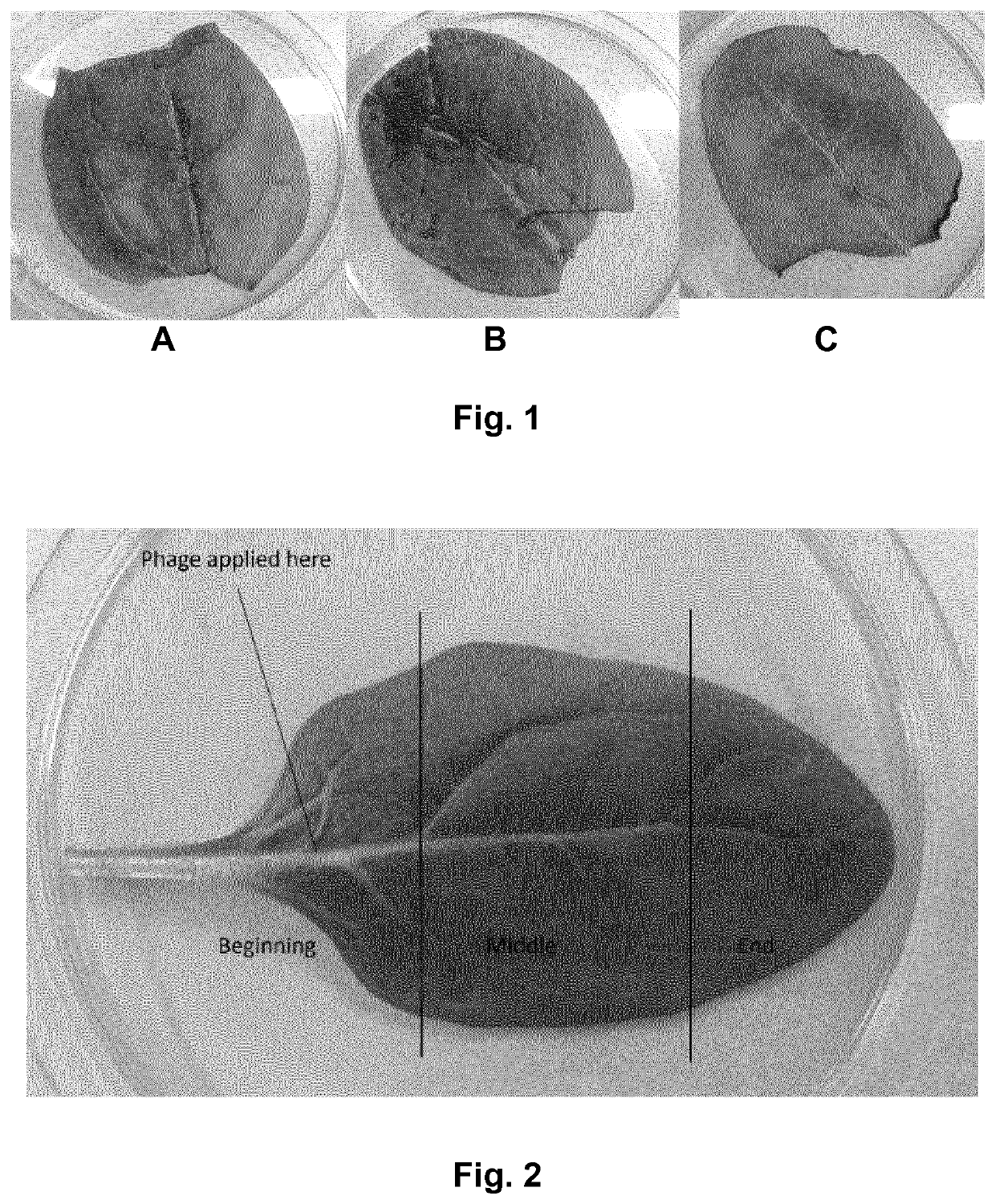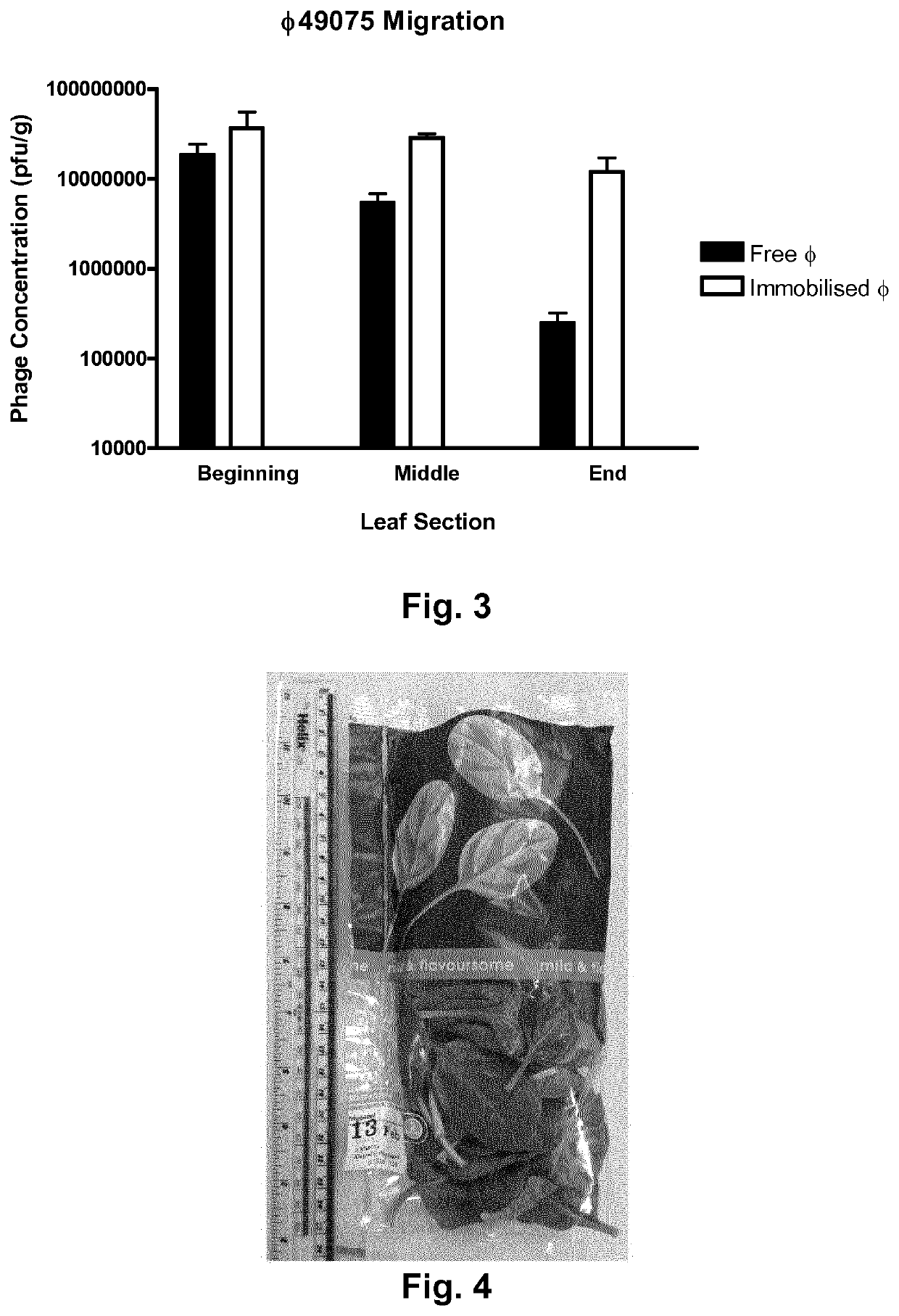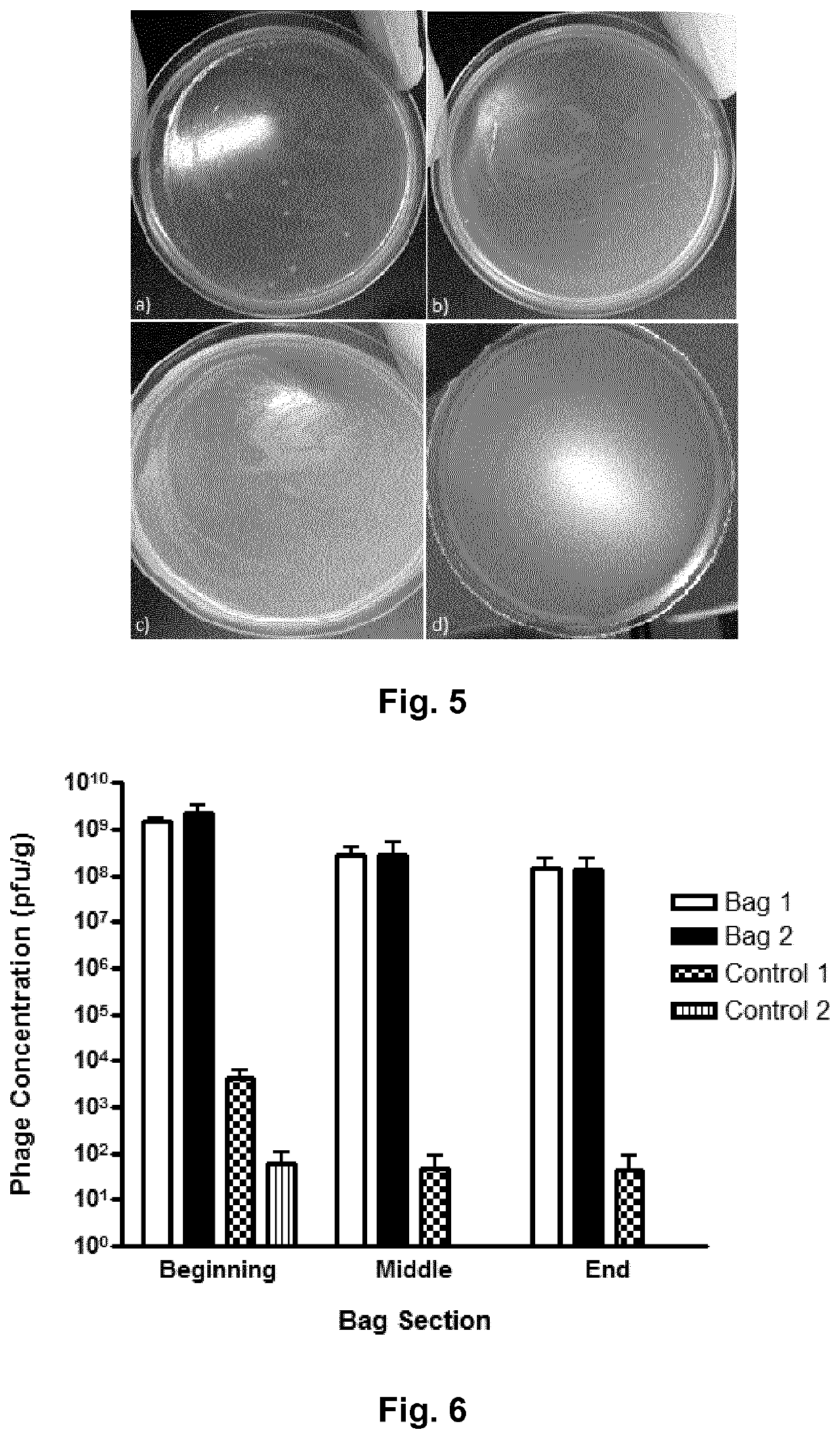Anti-bacterial packaging
a technology of antibacterial packaging and packaging material, applied in the field of antibacterial packaging, can solve the problems of ineffective treatment, reduced shelf life, and ineffective treatment of free bacteriophage, etc., and achieve the effects of extending shelf life, extending the edible or usable life of biological products, and extending shelf li
- Summary
- Abstract
- Description
- Claims
- Application Information
AI Technical Summary
Benefits of technology
Problems solved by technology
Method used
Image
Examples
example 1
Migration of Bacteriophage ϕ49075 on Spinach Leaves
[0083]Observation of bacteriophage migration on spinach leaf surfaces demonstrated that bacteriophage originating from free and covalently immobilised bacteriophages can disperse themselves.
[0084]Bacteriophage ϕ49075 and its corresponding host, Pectobacterium atrosepticum (Pba) 49075, a common plant pathogen, were used as a model to demonstrate phage migration. Immobilised bacteriophage were covalently attached to leaf surfaces treated with Pba 49075 alongside a free bacteriophage control. The extent to which the bacteriophages migrated across the leaves was measured.
[0085]To apply the bacteria, 1 mL of a 1 / 10 dilution of Pba 49075 overnight culture was dropped on a specific point on the leaf using a pipette. To apply the bacteriophage, 100 μl of lysate were spotted on the same point the host was added.
[0086]The results of these experiments (shown in FIG. 1) demonstrate that Pba 49075 causes spoilage in basil leaves and that ϕ49075 ...
example 2
[0093]Migration Study with Salad Bags
[0094]For this study, a migration study was carried out within salad bags to establish whether bacteriophages are also capable of dispersing across longer distances with more obstacles.
[0095]Salad bags measuring 24.5×10 cm (as illustrated in FIG. 4) were constructed from large Tesco 300 g spinach bags using a heat sealer. 50 g of spinach leaves were placed each bag. 10 mL of Pba 49075 were applied to the bag, which was sealed and inverted gently to distribute the bacteria inside it. An 8×4 cm sheet of plastic with covalently immobilised ϕ49075 thereon was placed at the far end of the bag, which was sealed again. The bag was left to stand for 36 hours at room temperature, after which it was divided up into three equal thirds, labelled ‘beginning, middle and end’ (‘Beginning’ referred to the section where the sheet of plastic bearing the covalently immobilised bacteriophage was present).
[0096]Initial testing was carried out to determine whether any...
example 3
The Shelf Life of Bagged Salad
[0102]The aim of this study was to demonstrate the antimicrobial performance of bacteriophages against Pectobacterium carotovorum in fresh cut salad leaves, and the effect that reducing the bacterial load had on product shelf life. P. carotovorum is a plant pathogen with a diverse host range and is widely associated with breakdown of foods within the supply chain.
Method
[0103]Six bags of 150 g of Florette Sweet Crispy salad were purchased, six days prior to their official ‘use by’ date. The following groups were tested:[0104]1. Control group. The leaves in the bag were sprayed with sterile water and heat sealed in the original bag.[0105]2. Bacterial group. The leaves in the bag were inoculated with 200 cfu / g of P. carotovorum. [0106]3. Bacteria+Phage covalently immobilised onto packaging. The leaves in the bag were inoculated with 200 cfu / g of P. carotovorum. In addition, bacteriophages were covalently immobilised onto the packaging, using the methods de...
PUM
 Login to View More
Login to View More Abstract
Description
Claims
Application Information
 Login to View More
Login to View More - R&D
- Intellectual Property
- Life Sciences
- Materials
- Tech Scout
- Unparalleled Data Quality
- Higher Quality Content
- 60% Fewer Hallucinations
Browse by: Latest US Patents, China's latest patents, Technical Efficacy Thesaurus, Application Domain, Technology Topic, Popular Technical Reports.
© 2025 PatSnap. All rights reserved.Legal|Privacy policy|Modern Slavery Act Transparency Statement|Sitemap|About US| Contact US: help@patsnap.com



